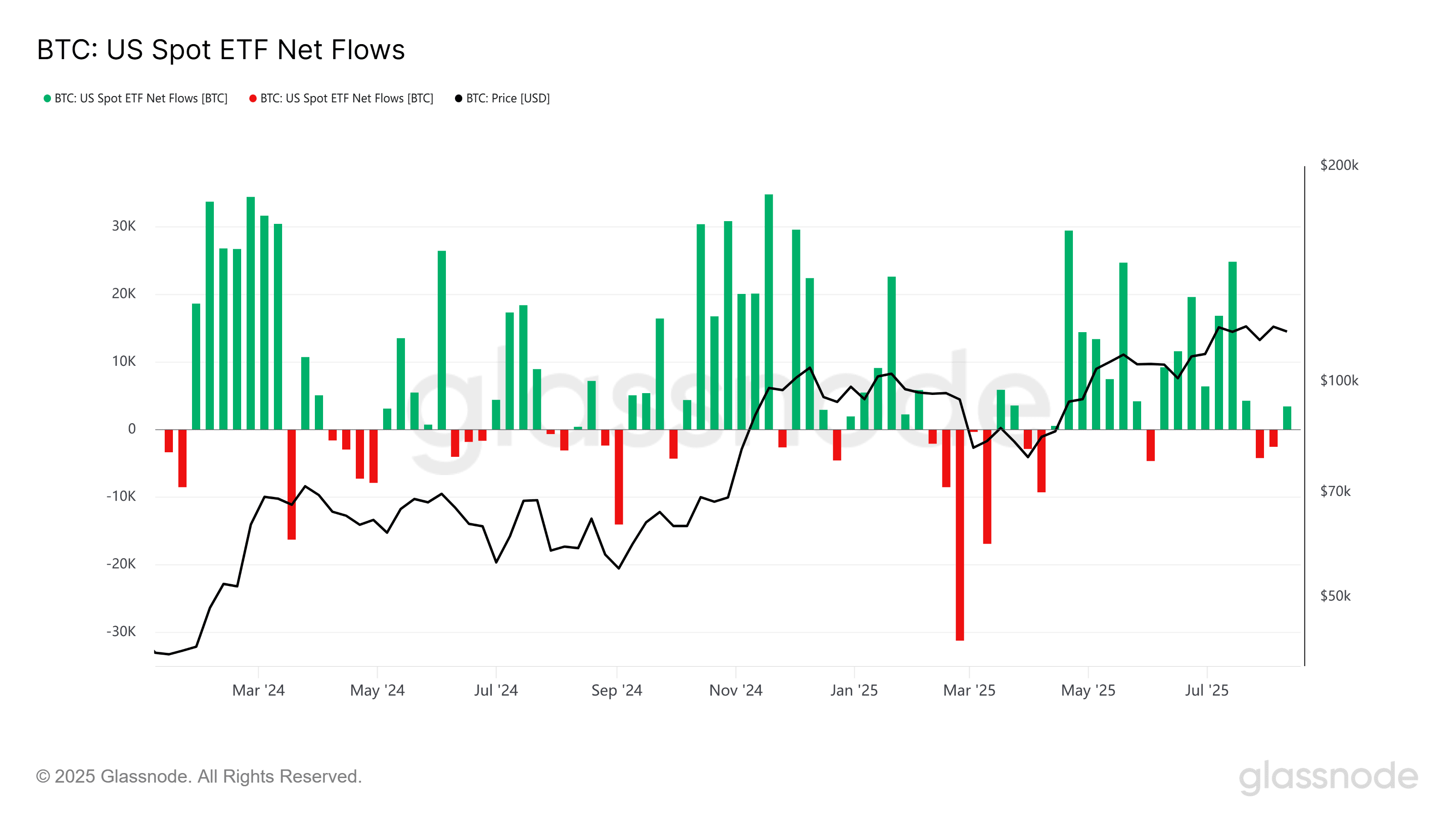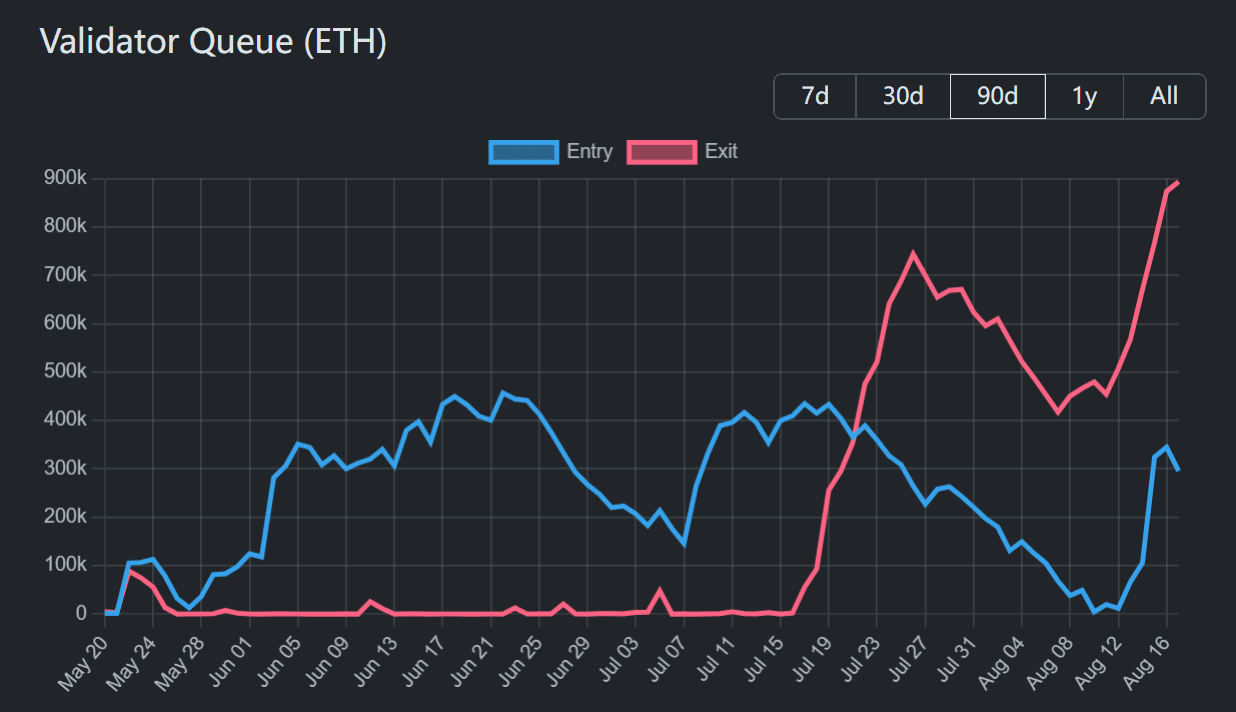The cryptocurrency market in August 2025 resembles the calm surface of the sea before a typhoon, seemingly undisturbed but in reality fraught with undercurrents. The price candles on the chart are stretched into an agonizing horizontal line, but this is not a brief pause in a bull market; it is an extremely fragile balance. The stagnation of Bitcoin and Ethereum's upward momentum is not due to a single external shock but rather the result of four powerful and conflicting forces locking prices tightly within a narrow range.
These four forces act like four invisible walls, collectively constructing the current market predicament: Wall Street's hundreds of billions of buying power through ETFs collide with the 'epic' profit-taking wall from early holders; within the Ethereum DeFi ecosystem, an algorithm-driven deleveraging engine continuously creates selling pressure; the derivatives market reveals a 'split personality' state where retail speculation and professional institution hedging coexist; and fundamentally, high yields on U.S. dollar stablecoins act like a giant magnet, drawing away the new liquidity that should have flowed into risk assets.
This delicate balance makes the entire market extremely sensitive to any macro fluctuations; any unexpected spark could ignite the entire 'powder keg'. The table below summarizes the key quantitative indicators that support this analysis, serving as cold footnotes to this multi-party game.
Table 1: Key Indicators of Structural Pressure in the Market (August 2025)

Derivatives.
The Illusion of Calm: A Warning of a Billion-Dollar Leverage Washout.
Before mid-August, the market was permeated with a strange calm. However, beneath this calm lies a leverage structure that had long been out of balance. On August 14, this fragility was instantly shattered by an unexpectedly high inflation report. The U.S. Bureau of Labor Statistics released the July Producer Price Index (PPI) far exceeding expectations, becoming the last straw that broke the camel's back.
The message transmitted to the highly leveraged crypto market is catastrophic. Within 24 hours, the entire market liquidated over $1.02 billion in derivative positions, affecting more than 220,000 traders. Bitcoin's price rapidly fell from its historical peak of over $124,000.
However, the key to this liquidation is not its scale but its extreme asymmetry. Among the bloodbath positions, long positions reached $872 million, while short positions were only $145 million, a stark contrast. This undeniably proves that, before the event occurred, the market had already been hijacked by excessive, one-sided bullish sentiment. Traders established massive leveraged long positions but lacked sufficient risk hedging, resulting in a 'top-heavy' market structure. The PPI report merely pulled the trigger, while the bullet was already chambered. This flash crash was a necessary and brutal correction of this internal structural imbalance.
Historical transfer: The demand for ETFs encounters the 'epic' sell wall from 'veterans'.
The first core contradiction in the market stagnation lies in a historical transfer of assets between old and new capital.
First, we need to have an accurate understanding of the inflow of funds into ETFs. Despite the high market sentiment, data from Glassnode shows that the weekly net inflow into U.S. spot Bitcoin ETFs remained at a robust level of several hundred million dollars in August. The institutional buying power from Wall Street is real and ongoing, but it faces equally large selling pressure.
So, who exactly is this 'mysterious opponent'? The answer lies deep within the on-chain data. Glassnode's report reveals that July 2025 is one of the months with the most severe sell-offs in Bitcoin's history, with long-term holders realizing profits at a rate of up to $1 billion per day. These early market participants and builders are selling their Bitcoin to new institutions entering through ETFs.
 Putting these two sets of data together perfectly explains the market's stagnation. This is not the engine of a bull market shutting down but an unprecedented capital rotation. For the first time in Bitcoin's history, one side consists of strictly regulated institutional buyers aiming for asset allocation, while the other side comprises early holders seeking to realize life-changing wealth through multiple cycles.
Putting these two sets of data together perfectly explains the market's stagnation. This is not the engine of a bull market shutting down but an unprecedented capital rotation. For the first time in Bitcoin's history, one side consists of strictly regulated institutional buyers aiming for asset allocation, while the other side comprises early holders seeking to realize life-changing wealth through multiple cycles.
The current price stagnation is precisely the manifestation of these two forces reaching a dynamic balance. The inflow of ETF funds has successfully absorbed the massive selling pressure from mature investors, preventing a price collapse. From this perspective, the market stagnation is precisely a sign of its maturation. This shift from 'belief-driven' to 'allocation-driven' asset transition is bound to be lengthy and full of friction, leading to a lack of upward momentum in prices in the short term.
DeFi Deleveraging Engine: Continuous Headwinds from Ethereum Core.
The second structural pressure in the market comes from within the Ethereum DeFi ecosystem, a large-scale deleveraging driven by protocol mechanisms.
As of mid-August, the exit queue for validators on the Ethereum Beacon Chain reached a historic peak. Approximately $3.1 billion worth of ETH is waiting to be unstaked, while only about $480 million is waiting to be staked. This severe imbalance in the flow of funds creates significant potential selling pressure.
 Its root is the collapse of a once-popular DeFi leveraged yield strategy. In the past, investors would deposit staked ETH (such as stETH) into lending protocols like Aave, cycling borrowed ETH for further staking to amplify returns. The core of this strategy lies in the borrowing rate of ETH being lower than its staking yield. However, recent market volatility has led to a surge in borrowing rates, exceeding staking yields and causing the entire strategy to shift from profit to loss.
Its root is the collapse of a once-popular DeFi leveraged yield strategy. In the past, investors would deposit staked ETH (such as stETH) into lending protocols like Aave, cycling borrowed ETH for further staking to amplify returns. The core of this strategy lies in the borrowing rate of ETH being lower than its staking yield. However, recent market volatility has led to a surge in borrowing rates, exceeding staking yields and causing the entire strategy to shift from profit to loss.
This forces all participants to liquidate, and the only way to do so is to unstake, retrieve native ETH, and repay loans. This series of forced actions directly leads to a 'major traffic jam' in the validator exit queue.
Unlike sell-offs driven by market sentiment, this selling pressure has two notable characteristics: mechanical and inelastic. It is a cold economic decision based on protocol interest rates, unrelated to market sentiment. Moreover, since the selling is to repay debts, this demand is rigid and will not disappear due to price rebounds. Thus, this $3.1 billion exit queue acts like a programmed selling engine, continuously releasing ETH supply to the market at a predictable rate over the coming days, becoming a structural resistance that Ethereum's price finds hard to overcome.
Divided Market: Speculation and Hedging in Derivatives Trading.
The third pressure is reflected in the highly contradictory signals conveyed by the derivatives market, revealing a 'split personality' state of the market.
On one hand, market speculation is vividly expressed in the altcoin sector. The open interest of Litecoin (LTC) reaches a historical peak of $1.27 billion, while Ripple (XRP) soars to over $3 billion. The surge in open interest reflects that a large amount of leveraged capital is flooding into these high-volatility assets, pushing the market's risk appetite to the extreme.
However, on the other end of the market, professional players considered 'smart money' are showing an entirely opposite caution. In the Bitcoin options market, the open interest for put options with strike prices between $80,000 and $100,000 is nearly five times that of call options in the same range. This indicates that institutions and professional traders are putting real money into purchasing 'insurance' to guard against potential large market corrections.
This contradictory state of simultaneous speculation and hedging constitutes a typical 'barbell' market structure. Market risks are allocated at two extremes: one end is occupied by speculative altcoin investors chasing high returns, while the other is filled with professional hedgers seeking extreme risk protection. The 'middle ground' representing broad, robust, and mid-term bullish confidence is unusually vacant. This intrinsic division makes the market structure extremely fragile, lacking a unified consensus to drive prices through key resistance levels.
The Cost of Liquidity: When 'Risk-Free' Returns Are Too High.
The fourth and most fundamental pressure comes from the high cost of dollar liquidity throughout the entire crypto ecosystem.
Currently, whether in centralized platforms or decentralized protocols, the annualized yield (APY) on deposits of dollar stablecoins generally remains high, ranging from 5% to 14%. Achieving such high returns on an asset pegged 1:1 with the dollar is unimaginable in the traditional financial world. It only indicates one thing: the market is extremely 'cash-strapped', and the demand for dollar liquidity is exceedingly strong.
This high-yield environment has created a powerful 'liquidity black hole'. For funds and mature investors, when they can achieve nearly double-digit annualized returns on a low-risk asset, parking their funds in this safe harbor becomes an extremely rational choice.
This leads to a key question: the new liquidity cannot effectively be converted into fuel for price increases. A large amount of capital that could have flowed into Bitcoin or Ethereum is attracted by high interest rates and has directly entered risk-free (or low-risk) arbitrage strategies. This capital is trapped in the 'money market' layer of the crypto ecosystem and has failed to penetrate the 'capital market' layer, fundamentally weakening the market's upward momentum.
Conclusion: Beware of the boot named 'interest rate cut'.
In summary, the current market stagnation is a fragile balance under the combined effect of four structural pressures. Institutional buying is offset by selling from early holders and hedging by professional investors; the DeFi deleveraging engine continues to exert pressure; and the high cost of dollar funds suppresses the willingness for new leveraged buying to enter.
Under such a fragile internal structure, the market seems to place its only hope on the macro expectation that the Federal Reserve is about to start a rate-cutting cycle. However, the ancient wisdom of financial markets repeatedly warns us: 'Buy the rumor, sell the news.'
When the interest rate cut boot truly drops, what the market may welcome is not a new round of revelry. Considering the ongoing inflation pressures, the Federal Reserve's rate cut is likely to be interpreted by the market as an official confirmation of a potential economic recession. At that moment, the rate cut itself might transform from a favorable story about 'increased liquidity' to a negative story about 'deteriorating economic fundamentals'.
This narrative shift is likely to become the fuse that ignites all current internal structural contradictions. At that time, rate cuts may not only fail to provide new upward momentum but could also become the last straw that breaks the camel's back, triggering a deeper structural clearing.
On this temporarily stranded crypto vessel, the real test may just be beginning.



